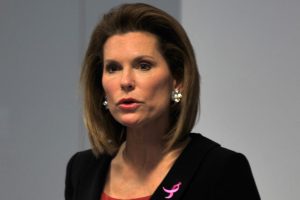When the Children’s Aid Society in New York City went looking for a new CEO, they were looking for someone with an entrepreneurial spirit. They found Richard Buery, Jr.
After earning degrees from Harvard University and Yale School of Law, Buery started two nonprofits in the East New York, Brooklyn neighborhood where he grew up: Groundwork and iMentor. That’s in addition to a summer camp he started for kids while he was at Harvard that still exists.
Last month, Buery, 38, began his new job as CEO of Children’s Aid Society, which is anything but nascent, having been founded in 1853.
Surveys in recent years indicate that most young people (Generation X and Generation Y) don’t see themselves staying in the nonprofit sector but Buery and others are not only sticking around, they’ve been ascending to executive posts.
Phil Radford, 33, was appointed executive director of Greenpeace USA in Washington, D.C., this past spring. Robert Goodwin was 36 at the time he was appointed president and CEO of Washington, D.C.-based Executives Without Borders early last year.
When he was accepted into the nonprofit management track at Wharton School of Business as a teen, Ben Jealous would have been the only person in that line of education at the school. The year was 1990. “It was the era of Alex P. Keaton, everybody wanted to be a Wall Street whiz kid,” Jealous said, referring to the Michael J. Fox character in the seminal 80s sitcom, Family Ties.
Today, Jealous, at age 35, is the youngest president in the history of the century-old NAACP in Baltimore, Md., having assumed the role a year ago. The nonprofit sector is becoming more aware of its impending leadership crisis and the disproportionate leadership share by retiring Baby Boomers, he said. The industry is beginning to realize the mathematical necessity of training and grooming new leadership. “You have to be systematic about expanding the pipeline,” said Jealous.
The nonprofit sector must find a better way to nurture leaders, and foundations can play a role, Buery said. “I know so many who’ve worked so hard for so little. You have to find a way, and it doesn’t have to be a herculean effort,” he said.
The biggest challenge to his generation, Jealous said, is the high standards for involvement with their families. They were raised by civil rights and anti-war activists who “didn’t think twice about giving every minute, every day to the cause” whether they were married with families or not.
Growing up in California, his father was director of a local volunteer center and his mother was a crisis counselor at a local social service organization. Jealous said he’s inherited his father’s trait of working too many hours running and building the nonprofit that he managed, but he’s trying to change. “That’s the struggle of the generation raising kids in this society while running nonprofits: balance. Do you have enough time for family as well as time to raise funds and manage that?”
Board members at Children’s Aid Society were focused on where they want the organization to go during the next 10 to 15 years when they went looking for a new CEO. “It takes that long to move an organization like Children’s Aid Society,” said Mark Edmiston, a board member who was involved in the search process that ended with Buery.
“Despite our success over the years, we felt we needed some things,” he said. The hallmarks of Buery’s administrations have been rigorous, independent appraisal of its work, and making adjustments when necessary, according to Edmiston, while ensuring the nonprofits he founded have continued.
There was some discussion whether to opt for someone who had years of experience running a large organization. “There was a conscious feeling that we had to go in a different direction,” Edmiston said, adding that the organization was “not looking for revolution, but evolution.” It’s the first time that a chief executive for Children’s Aid Society has not come up through the organization. “The board was brave in breaking the mold,” Buery said, making the nonprofit an “open-minded place willing to try different things.”
At 28, Jessica Lawrence became one of the youngest chief executives in the Girl Scouts national organization when she was appointed last year at the San Gorgonio Council in Redlands, Calif., which serves 15,000 girls and 5,000 adult volunteers in San Bernardino and Riverside counties.
For someone coming from outside the organization, Lawrence could see it becoming more difficult to crack the executive level. Some boards might see risk in hiring a young CEO based on an assumption that they’re not as capable or don’t have the level of expertise to handle the position. “At least my organization had direct history with me, and I worked with a lot of our staff. It wasn’t quite as risky for them,” she said.
“My situation was relatively unique combination of being successful in previous positions in the organization and then being in the right place at the right time,” Lawrence said. Armed with a psychology degree from the University of Maryland, she joined the council in 2003 as a fund development associate. During the next six years, she was promoted to director of development and eventually chief operating officer before becoming the boss.
That familiarity helped Lawrence, and other young nonprofit executives agree that being with an organization can help candidates ascend the corporate ladder.
“Having grown up in this organization is an advantage,” said Doug Ulman, president and CEO, Lance Armstrong Foundation (LAF) in Austin, Texas. “Anytime you spend a number of years in the same place, you get to observe, watch and learn. That can serve you well as you’re promoted, you’ve experienced the organization at different levels and have that insight,” he said. Ulman joined LAF first as director survivorship, then became chief mission officer and in 2007 was appointed president.
Ulman, 33, was diagnosed with cancer at 19 while attending Brown University. He founded a nonprofit after realizing there was a dearth of resources for young people with the disease. Cancer obviously influenced the direction of his career — he probably would’ve been a teacher or in public service — but it also probably influenced the foundation’s board. “My personal experience brings with it perspective, passion, and I think in my role here, conveying that passion and perspective is one of the most important things you do externally and internally as a leader,” he said.
Lawrence credits a relationship with an older employee she supervised for learning quickly that age doesn’t matter. “We had the same mindset in terms of being innovative pushing the envelope taking a few risks,” she said. “She really set me up to be successful at managing people of all ages. I learned early on not to make assumptions,” said Lawrence. “I didn’t want people to make assumptions about my age,” she added, and didn’t want to make similar assumptions of older people about their creativity and innovation. NPT












